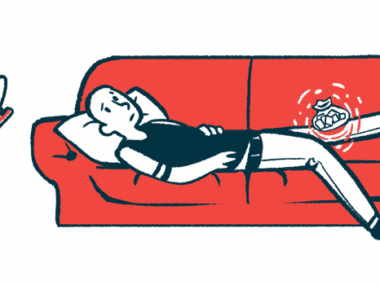How Do Doctors Assess Joint Hypermobility in EDS?
Written by |

A common feature of Ehlers-Danlos syndrome (EDS) — a group of rare inherited conditions that affect connective tissue — is joint hypermobility.
Connective tissue is an integral part of the skin, tendons, ligaments, blood vessels, and many organs and tissues in the body. Changes in these tissues lead to the symptoms of EDS, which doctors can assess using different tools. Patients with most types of EDS have hypermobile joints.
What is joint hypermobility?
Joint hypermobility is defined as a larger-than-normal range of motion in one or more joints. The extra flexibility can be benign or even helpful for some people such as gymnasts and ballet dancers. It can also be a symptom of different disorders such as Marfan syndrome, Stickler syndrome, and EDS.
The extra range of motion in the joints is often related to mutations in genes encoding for one or more types of connective tissue protein, including collagen, elastin, and fibrillin. The connective tissue is what forms the tendons and ligaments that connect muscles to bones and hold joints together. When a mutation affects a connective tissue protein, the connective tissue is often looser and stretched easily, which leads to extraordinary range of motion and potentially frequent dislocations and trouble with movement. In EDS, changes in collagen cause joint hypermobility.
How is joint hypermobility assessed?
Beighton scoring system
The most common test to assess joint hypermobility is the Beighton scoring system, which uses a nine-point scale to measure joint hypermobility. Doctors assess five different joint movements, four of them on both sides of the body.
The first movement involves the patient placing their hand, palm down, on a table. They then lift their fifth finger, the pinky, backward with their other hand. The doctor assesses whether it can bend more than 90 degrees. If it can, then they add one point to the Beighton score. The patient then repeats the movement on the other hand and if it can also bend beyond 90 degrees, the doctor records another point.
Then, the flexibility of the thumb is assessed. The patient holds their arm out straight with their hand rotated so that their palm is downward and their wrist is bent towards the floor. From this position, the patient will try to bend their thumb down with their other hand enough to touch the underside of their forearm. If successful, the doctor adds a point to the patient’s Beighton score. The patient then repeats the same on the opposite side for another potential point.
The third movement assesses the hypermobility of the elbow. The patient holds their arm up and stretched out to the side with their palm facing up. If the elbow bends upward more than 10 degrees past normal, the doctor adds a point to the score. The patient repeats this on the opposite arm.
Doctors assess the knees next. The patient stands up straight and bends their knees back as far as possible. If they can bend more than 10 degrees beyond normal then they score one point for each knee.
The final movement is to test the spine. The patient stands up with their feet together and then bend over to touch the ground with their knees straight. If they are able to place both palms completely on the floor in front of their feet then they score one additional point.
The doctor then adds up the points to reach a total Beighton score. The original definition of joint hypermobility was scoring a 5 or greater. Since the range of motion of joints decreases as a patient ages, the scores have been adjusted accordingly, especially for hypermobile EDS (hEDS).
The new Beighton score cutoffs are adjusted for age. According to this, pre-pubertal children need a score of 6 or greater, post-pubertal people up to age 50 need a score of 5 or more, and those older than 50 need a score of 4 or higher to receive a diagnosis of hEDS.
Five-point questionnaire
If a patient has any acquired joint limitations from, for instance, previous surgeries or injuries that affect their Beighton score, physicians may adjust the score using historical information collected from a five-point questionnaire. This questionnaire asks the patient:
- Can you now, or could you ever, place your hands flat on the floor without bending your knees?
- Can you now, or could you ever, bend your thumb back to touch your forearm?
- As a child, could you contort your body into strange shapes to amuse your friends or do the splits?
- As a child or teenager, did your shoulder or kneecap dislocate on more than one occasion?
- Do you consider yourself ‘double-jointed’?
If patients answer ‘yes’ to two or more of the questions, then there is an 85% chance they could have joint hypermobility.
Last updated: Nov. 4, 2020
***
Ehlers-Danlos News is strictly a news and information website about the disease. It does not provide medical advice, diagnosis, or treatment. This content is not intended to be a substitute for professional medical advice, diagnosis, or treatment. Always seek the advice of your physician or other qualified health provider with any questions you may have regarding a medical condition. Never disregard professional medical advice or delay in seeking it because of something you have read on this website.





